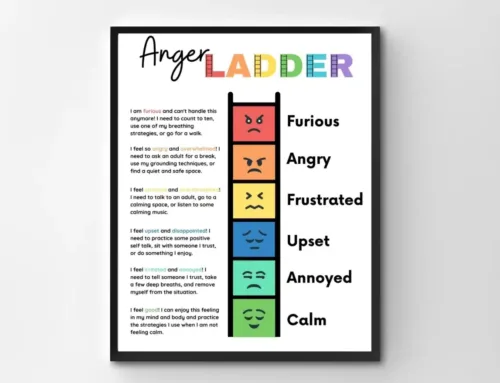Managing anger and frustration starts with recognising that anger is a natural signal. When you feel angry, the body often surges with physical sensations such as a rising heart rate, hot face, and tight jaw, while negative thoughts race. That spike can help you act, yet uncontrolled anger in daily life can harm relationships, sleep, and physical health, and anger affects blood pressure over the long run. The first step is simple: take a few deep breaths, create a few moments of personal space or quiet time, and choose healthy ways of expressing anger so you control the response rather than react.
How do I calm anger and frustration now?
Breathe slow, label the emotion, and take a short pause so control returns quickly.
Use deep breathing in a four by four rhythm for two minutes to reduce stress and settle angry feelings. Say, “This is anger,” or “This is frustration,” to shift the brain from threat to label. Step away for a few moments, lower your voice, and reset posture before you respond. If you can, step outside for fresh air and take deep breaths to help the emotions rebalance. For simple calm routines and attention anchors, see Meditation and Mindfulness Strategies.
How do I stop blowing up over small things?
Build frustration tolerance with micro delays and thought checks so small hassles stay small.
Insert a ten second delay and one long exhale before acting when frustrating moments hit, for example a late message or a dropped glass. Replace “This must go my way” with “I prefer X, and I can handle Y,” which helps you manage disappointment and stay calm. When you lose patience because you are tired or rushed, repeat your delay and breathe again. Reduce perfection rules that turn minor hassles into danger signals, and practise expressing needs in healthy and respectful ways. If perfection keeps you stuck, read Perfectionist or Obsessional Rigid.
How do I cut daily triggers this week?
Fix sleep, plan buffers, and set one boundary to lengthen the fuse.
Sleep 7 to 9 hours, cut caffeine after midday, and reduce alcohol on work nights to stabilise emotional state and focus. Add buffers before friction points such as traffic, school pickups with the kids, or back-to-back meetings. State one boundary using behaviour, impact, and request, then follow through once. These steps reduce stress in the moment and protect future energy. See practical load tools in Stress Management Techniques.
When should I seek professional help?
Act if anger or frustration is frequent, harmful, or hard to stop, and book structured support.
Red flags include weekly blow ups, property damage, threats, worse conflicts, or a partner or child feeling hurt or unsafe. If anxiety, depression, or poor sleep run alongside anger issues, involve a health professional. A focused plan often includes six to ten sessions with skills practice and review. Compare options via Counselling Services, and debrief with a trusted friend for added accountability.
What is the difference between anger and frustration?
Anger targets a perceived wrong, while frustration targets blocked goals, so each needs a different plan.
Anger says, “They crossed a line,” which needs regulation and timely repair. Frustration says, “I cannot reach my aim,” which needs flexibility, problem solving, and a healthy outlet for energy.
Why do I get so frustrated over small things?
High load, rigid rules, and low recovery shrink tolerance and make small hassles feel big.
Sleep debt, back-to-back demands, and stimulants shorten patience and make a delay or a noisy room feel like danger. “Must” and “should” rules convert minor problems into threat, so the mind treats a queue like an attack. Load-management ideas are outlined in How to Manage Stress.
Is frustration a form of anger?
Frustration often precedes anger when blocks persist, so early skills prevent escalation.
The path is simple: blocked goal leads to frustration, prolonged blocks tip into anger, which can lead to conflict. Insert breath, a micro delay, and a reframe during frustration to stop the jump.
How does stress contribute to anger and frustration?
Stress loads the threat system and drains control, which pushes snap reactions.
Cortisol and adrenaline narrow attention and bias you toward action, while clear thinking lags. Short resets, a brisk walk, and brief quiet time return balance so you can choose a better response.
What are common signs of poor frustration tolerance?
Low patience, all-or-nothing thinking, and quick irritability signal a short fuse.
You may quit tasks early, use harsh self talk, or overreact to delays. Track time, place, heart rate, intensity 1 to 10, thoughts, and outcome for one week so you become aware of patterns in work, home, and social life.
Is it normal to feel angry every day?
Brief anger is common, while daily anger signals a pattern to address with skills and support.
Short spikes are completely normal and can be useful, but constant heat raises high blood pressure risk and strains relationships. Use a simple plan: one skill daily and one trigger changed each week, and ask a trusted friend to check in.
What causes chronic frustration in adults?
A mismatch between demands and control drives ongoing strain and repeated flare-ups.
Common causes include unclear roles, unfair rules, financial pressure, chronic pain, and competing priorities with kids or carers. Use problem solving steps: define the issue, list options, pick one small action, review results, and repeat.
How does frustration affect mental health?
Persistent frustration links with worry, low mood, and sleep problems, so treat both the load and the mood.
Rumination and decision fatigue keep you stuck in negative feelings. If anxiety or depression also appear, add integrated care starting with What Is Anxiety, and lean on communication skills and talking to prevent isolation.
Can anger and frustration hurt your relationships?
Repeated spikes erode safety, respect, and repair unless you fix the cycle.
Criticism, defensiveness, and stonewalling create distance. Repair in three steps: own the impact, validate the person, and state a plan. For respectful language that keeps a connection, see Resolve Conflict with Better Communication.
What are the physical symptoms of anger and frustration?
Expect muscle tension, a hot face, a fast heart, and shallow breath when spikes hit.
Headaches, gut churn, and poor sleep often follow late-night conflict. Use slow exhale, posture resets, and a few deep breaths to counter the surge. Learn the body–stress link in How Prolonged Stress Creates Illness.
What happens in the brain during anger and frustration?
Threat circuits speed up while control circuits lag, which is why fast skills matter.
The amygdala fires quickly; prefrontal control is slower. Slow breath, pauses, and grounding bring control back online so you can express needs in anger in healthy ways.
Can anger be a symptom of something deeper?
Fear, shame, grief, or trauma can sit under anger, so name the deeper emotion and match support.
Ask, “What else do I feel right now,” and label it. If intrusive memories or body cues trigger spikes, consider trauma-informed support and reflect with a health professional; background dynamics are outlined in Implications of Chronic Shame.
Are there different types of anger patterns?
Hot anger, cold anger, and suppressed anger carry different risks and need tailored skills.
Hot anger explodes and regrets, cold anger withdraws and controls, and suppressed anger leaks as sarcasm. Match skills to pattern: de-escalation and time outs, assertive requests, or safe expression with a single respectful line.
Is it bad to suppress anger?
Suppression hides the signal and increases later blow ups, while regulation channels energy safely.
Regulate by breathing, pausing, and making one clear request. Use a healthy outlet such as a brisk walk, progressive muscle relaxation, or journaling, and then return to the topic when both people can listen.
Can personality affect anger and frustration levels?
Temperament and belief styles shape reactivity and recovery.
Sensitive threat detection and black-and-white rules make it easier to see danger and harder to cool down. Flexible beliefs and regular resets help you cope better in the world you move through each day.
What quick steps help today?
Use a two minute reset and one small change so improvement starts now.
Breathe four by four, take a brief pause, and lower your voice. Choose one change for a known trigger and review in 24 hours. For a compact checklist you can use with a partner, child, or colleague, read 10 Anger Management Tips.
Conclusion
Anger and frustration can fuel clearer choices when you notice early cues, take a few deep breaths, and choose healthy ways to express needs. Use short pauses, simple reframes, and one respectful request to manage anger in the moment. Build sleep and movement habits, set one boundary each week, and ask a trusted friend to keep you on track. If patterns persist, involve a health professional before problems grow worse.
With steady practice you control anger rather than react to it, you protect mental health and physical health, and you strengthen your communication skills so you can lead your life with more calm, respect, and connection.
Related Posts
Fees And Rebates
We offer cost-effective solutions that can fit within your budget. The insights and skills acquired in therapy can continue to positively impact mental and emotional health long after the therapy sessions have ended, making it a truly worthwhile investment in yourself.















